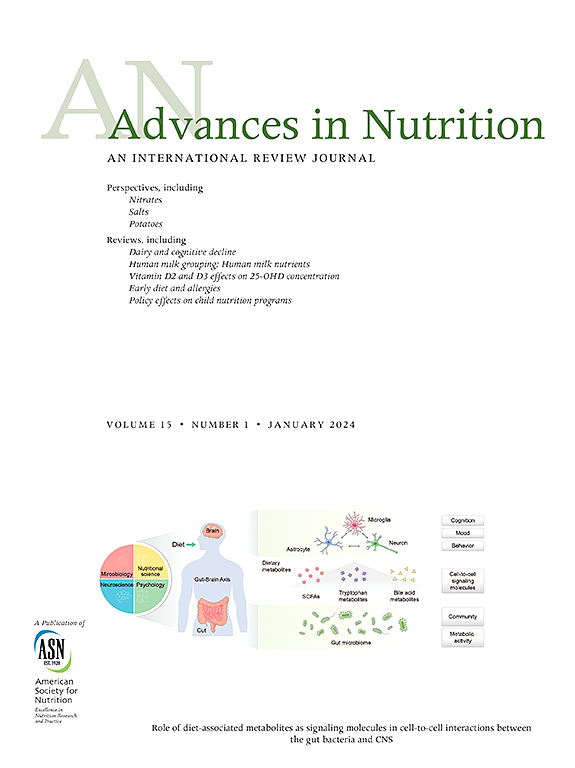遗传因素与母乳喂养之间的相互作用对儿童体重状况的影响:系统综述。
IF 8
1区 医学
Q1 NUTRITION & DIETETICS
引用次数: 0
摘要
母乳喂养可能与其他风险因素相互作用,共同影响儿童的生长。本系统综述旨在研究遗传因素与母乳喂养之间的相互作用,以及它们如何共同影响儿童的体重状况。截至 2024 年 8 月,我们检索了四个数据库,并确定了八项符合条件的研究。脂肪量与肥胖相关(FTO)基因和过氧化物酶体增殖激活受体-γ2(PPARG2)基因是研究最多的基因。尽管母乳喂养和基因对儿童体重状况的相互作用结果仍不一致,但一些研究报告称,母乳喂养或纯母乳喂养减轻了基因风险等位基因(多基因研究中肥胖特定基因风险评分较高)与儿童体重过度发育之间的不利关联。这些研究结果支持世界卫生组织关于延长母乳喂养时间的建议,并进一步表明,母乳喂养干预措施对具有不利遗传倾向的人群可能更有效。(PROSPERO: CRD42023448365) 意义声明:据我们所知,这是第一篇系统性综述,对母乳喂养与遗传因素之间的相互作用及其对儿童体重状况的影响进行了批判性评估。本文章由计算机程序翻译,如有差异,请以英文原文为准。
Influence of the Interaction between Genetic Factors and Breastfeeding on Children’s Weight Status: A Systematic Review
Breastfeeding may interact with other risk factors and have a combined influence on child growth. This systematic review aimed to examine the interaction between genetic factors and breastfeeding and how their combination is associated with children weight status. Four databases were searched until August 2024, and 8 eligible studies were identified. The fat mass and obesity associated (FTO) and peroxisome proliferator-activated receptor γ2 (PPARG2) genes were the most examined genes. Although the results of interactions between breastfeeding and genetics factors on children’s weight status were inconsistent, some of studies reported that breastfeeding or exclusive breastfeeding attenuated the disadvantageous association between the risk alleles of the genes (higher obesity-specific genetic risk score for a multiple-gene study) and overdevelopment of children’s body weight. These findings support the WHO recommendations for prolonged breastfeeding and further suggest breastfeeding interventions to prevent childhood obesity may be more effective in populations with a disadvantageous genetic predisposition.
This review was registered in PROSPERO as CRD42023448365.
求助全文
通过发布文献求助,成功后即可免费获取论文全文。
去求助
来源期刊

Advances in Nutrition
医学-营养学
CiteScore
17.40
自引率
2.20%
发文量
117
审稿时长
56 days
期刊介绍:
Advances in Nutrition (AN/Adv Nutr) publishes focused reviews on pivotal findings and recent research across all domains relevant to nutritional scientists and biomedical researchers. This encompasses nutrition-related research spanning biochemical, molecular, and genetic studies using experimental animal models, domestic animals, and human subjects. The journal also emphasizes clinical nutrition, epidemiology and public health, and nutrition education. Review articles concentrate on recent progress rather than broad historical developments.
In addition to review articles, AN includes Perspectives, Letters to the Editor, and supplements. Supplement proposals require pre-approval by the editor before submission. The journal features reports and position papers from the American Society for Nutrition, summaries of major government and foundation reports, and Nutrient Information briefs providing crucial details about dietary requirements, food sources, deficiencies, and other essential nutrient information. All submissions with scientific content undergo peer review by the Editors or their designees prior to acceptance for publication.
 求助内容:
求助内容: 应助结果提醒方式:
应助结果提醒方式:


